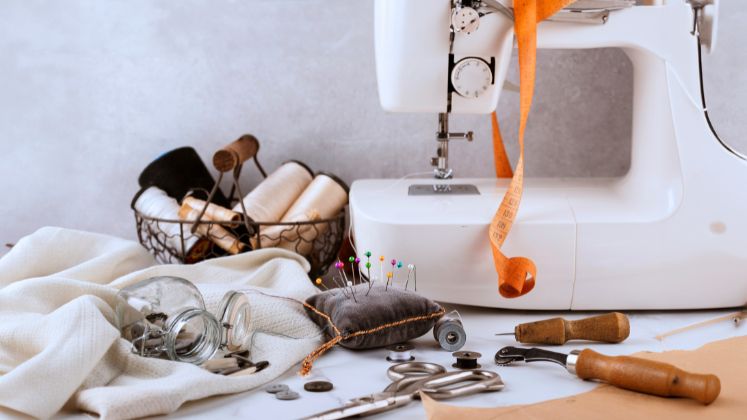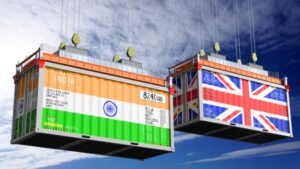
International buyers exhibited ample excitement at the possibility of sourcing PPE and other non-medical supplies (industrial protective clothing, shoe covers, bouffant caps, etc.) out of India. Consequently, many buying offices have been receiving large enquiries from both their regular customers and new retailers/brands. To its credit, the industry has been ramping up as well to support the PM’s call for ‘Make in India’, but as of today, all is washed down the river mainly due to the lack of understanding of the category by departments and people who are controlling and monitoring the exports of PPE.
While many buyers have already placed test orders or even a good chunk of their overall needs by paying a decent premium over their China costs, as they don’t want to place their requirements in China, but now they grossly fear the current environment of uncertainty on export quota, testing, prohibitions, etc. and its implications on their business.
Buyers and buying offices are a confused and frustrated lot, and are asking many valid questions that need straight answers, like…
- When will the prohibitions/quota be lifted?
- Why are test reports which are not valid in an importing country made mandatory?
- Why are the mandatory EU medical quality systems like ISO 13485/ISO 9001/CE not even asked for, and why is just a test report with few tests used to validate quality of the goods produced?
- Why are the allocated HSN codes similar for both non-medical and medical garments?
- Why are other medical devices not regulated similarly?
- Why is there no quota on ventilators or any test reports asked for the product, which is even more critical?
Also Read: Why PPE export with quota is the right decision!
As agents, there have been many more questions like the above that we have been facing every day from our customers and to which we don’t have a clear answer or logical explanations.
In all this confusion and mess, there is one and only truth – that business and opportunities are being lost to countries like Pakistan, Bangladesh, Indonesia, etc., and we are forced to refuse orders which we could have easily catered to or sitting with orders which cannot be shipped because of the uncertainty.
Take the example of N95; we have completely lost count of how many orders we must have refused until now… may be millions and millions of units. N95 are mandated to be used in medical setting, and since the exports are banned, the industry is crying with huge capacity, no local demand and price crash, but no one to hear their plight! I know of a factory which has stopped production on all 10 lines and sitting with finished goods of 2.5 million units and no one to take them, even we can’t help them, in spite of having buyers asking for them. All investments into machines, compliances, raw material have gone down the drain.
Another good example of capacity gone waste is of non-medical occupational coveralls, a category that was well in existence even before COVID-19 hit the world. Apart from illogical blanket ban by way of a specific HSN code also used for medical coveralls, DGFT and Customs cannot differentiate between medical and non-medical coveralls by looking at them, thus asking for test report for every garment made of non-woven fabric in any weight from BIS and NABCB as per medical use, purpose to which they were never made in the first place. For medical coveralls, tests are not difficult to comply, but then time taken to get that test results is almost 2 months, as there are only a few labs approved for the test.
Also Read: Coverall Exports – India missed the bus!
Another problem is in the basic understanding of medical and non-medical coveralls… how a non-laminated fabric in 30-45 GSM can pass that blood penetration test. Unfortunately, the people monitoring the system don’t apply their common sense, and even worse, they are not even ready to trust declarations from factories or buyers or any evidence of proof, like their product catalogue, garment label, etc. that they produce along with the product. This has led to exporters and buyers feeling disgusted and frustrated to the core. It makes many exporters feel as if they are smuggling something illegal out of India, that after manufacturing the goods as per international norms and making huge investments.
Buyers are right; the Indian Government is relying solely on an approved test report from BIS/NABCB to export even if the product was made in a shanty somewhere under the most non-compliant and unhygienic conditions. Our intelligent bureaucrats fail to realise that to avoid such a situation, the EU for example has put strict requirement of ISO 13485/CE/ISO 9001, etc. in place for factories manufacturing PPE, medical coveralls, etc. and their own mandatory test protocols to which BIS does not even fulfil scantily.
Question is why market forces are not allowed to dictate the requirements as per need of the buyers and importing countries’ regulations like in case of ventilators, are we doubting their intelligence and competence to safeguard their own interests or is someone trying to take care of their own interests, as many news of unfair practices doing the round would suggest?
Question is also why market is flooded with fake certificates of FDA/ISO 13485/CE/ISO 9001, and if the Indian Government thinks so critically of their reputation, why is there no crackdown and an agency in place to control it?
Under huge pressure, India recently allowed export of PPE fabric, but it is a cake half baked – what it really means is that countries like Bangladesh who don’t have expensive fabric-making infrastructure will import it, do little value addition and earn all the foreign exchange for themselves, leaving manufacturers with huge investments in lurch and increasing overall unemployment especially when other export orders have already dried up.
India may be right to put a quota in place (ideally should have been for a small time to ramp up infra – which has been done long back) to put precedence over its own needs due to COVID-19 cases, but that needs to be evaluated on a regular basis, category wise as well as with regards to inputs being used and in constant dialogue with the industry. Unfortunately, it also seems the Government does not have its ears on the ground, and while there is excess capacity today, a lot of factories are closing down or they have lost interest in the category due to current challenges in spite of making huge investments, though demand for protection articles as per buyers is here to stay strong till the end of 2022, until a vaccine is found and 7.5 billion souls inoculated.
Not sure when we will be able to have valid answers to buyers’ many queries, but the truth is that the industry and people continue to suffer due to sheer short-sightedness and inadequate intelligence of policymakers… not sure until when!
Also Read: This is how India is losing and competitors are growing in PPE export






